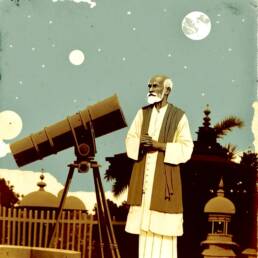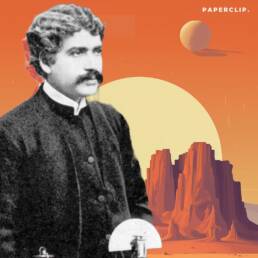As successive generations of Indian scientists aspired to build a cyclotron in the country, they had to overcome several barriers – from World War to Partition, from Naxalism to crippling power crisis – in their quest for success. We look back at their fascinating journey.
A cyclotron is a type of particle accelerator invented by Ernest. O Lawrence in 1929-30 at the University of California, Berkeley. It was the first “cyclical” particle accelerator, a marked improvement over the earlier electrostatic accelerators resulting in a manifold increase in energy generated.
In the late 1930s, Basanti Dulal Nag Chowdhury was a Master’s student at Allahabad University. Here, he made the acquaintance of renowned physicist, Dr. Meghnad Saha.
Nag Chowdhury became an ardent follower of Dr. Saha and joined his research group. When in July Dr. Saha joined Rajabazar Science College, Nag Chowdhury followed him there.
It was through Dr. Saha that Nag Chowdhury made contact with Ernest Lawrence. With active encouragement from his mentor, Nag Chowdhury traveled to Berkeley to work on his doctorate in nuclear physics under the advisory of Ernest Lawrence.
By then, both mentor and protégé had started to harbor the dream of building a cyclotron for the country. In 1941, Nag Chowdhury returned to India and with financial backing from the Tata Group, plans began in earnest.
Due to lack of manufacturing capability in India, almost all parts were to be imported. Sadly, Nag Chowdhury and Saha’s dreams suffered a hard hit. While one consignment safely made it to India, the second was lost at sea – possibly drowned by an Axis submarine.
With international commercial shipping under siege, Saha and Nag Chowdhury decided to try and manufacture parts at home. But it was hugely challenging.
Certain parts, like vacuum pumps and demountable oscillators, proved difficult to make with the limited infrastructure available in the country. Moreover, threats of a Japanese invasion, air raids and diversion of industrial capability to war efforts made their task doubly difficult.
As independence arrived, the province of Bengal was one of two to suffer from the horrors of partition. Nag Chowdhury’s family was based in the eastern side of the province. Thankfully, he was able to relocate them to Calcutta.
As things slowly settled down, Nag Chowdhury and team worked with renewed vigor to build the cyclotron. By 1948, imported parts started to arrive. Eventually, except for the magnet yoke and pole pieces, all components of the 38” cyclotron were made indigenously.
In the early 1940s, Jawaharlal Nehru, as head of INC’s National Planning Commission had made a grant of INR 60,000 to Calcutta University for a building to house the cyclotron. By the end of the decade it was realized that the space wasn’t enough.
In 1950, the Atomic Energy Commission (AEC) granted INR 1.2 lakhs for creation of the Institute of Nuclear Physics (presently known as Saha Institute of Nuclear Physics) where the cyclotron was to be housed.
By 1954, the cyclotron was operational and was able to generate an internal beam in 1960. Although Dr. Saha was not alive to witness the latter, the dream that he had sown in his dear student, B.D. Nag Chowdhury, had come true.
But the dream was only going to get bigger. In 1968, the Atomic Energy Commission (ATC) decided to build an 88” cyclotron at the Variable Energy Cyclotron Center (VECC) in Calcutta. But the odds were insurmountably stacked once more.
The acute foreign exchange crisis meant importing parts was almost impossible. The biggest obstacle though, was building the 260 tonne magnet. Eventually, it was built at the Heavy Engineering Corporation (HEC) at Ranchi.
By this time, the Naxalite insurgency was raging in Bengal. The state flirted with short-lived coalition governments and President’s rule alternately. To make matters worse, the state and the city were plagued by a power crisis resulting in long and frequent power cuts.
Dr. Raja Ramanna, Head of the Physics Group at BARC, circumvented the latter problem by deciding to work almost exclusively at night when power demand and possibility of load shedding were lower. The plan worked and he came up with the term “Nocturnal Cyclotron!”
Building of the resonator tank, an airtight chamber that is the driver of the immense power that runs the cyclotron, was another major challenge. Eventually, Dr. Ramanna and his group zeroed in on Garden Reach Shipbuilders and Engineers (GRSE).
Its experience in building watertight marine vessels came handy and the resonator tank was duly made. Key internal parts of the resonator tank were made at the Central Workshops in BARC. Main magnet coils came from Bharat Heavy Electricals Ltd (BHEL).
On 16th June, 1977, at approximately 3.30 a.m., the first internal beam was obtained. Less than 10 years from its inception, despite tremendous odds, Indian scientists had made a nearly four decade dream come true. And it was truly “Made in India.”




